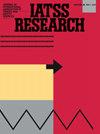Toward zero traffic deaths and disabilities with active and passive safety technologies in the association of southeast Asian nations
IF 3.3
Q3 TRANSPORTATION
引用次数: 0
Abstract
Road traffic crashes caused more than 108,000 deaths and 6,200,000 injuries resulting in 7.7 million disability-adjusted life years (DALYs) lost in the Association of Southeast Asian Nations (ASEAN) in 2019. This study estimates that 59 % of these casualties could have been avoided if all vehicles were designed to provide crash protection equivalent to that of the best vehicle safety design in their class and all road users adhered to safety best practices. Results of comparative risk assessments indicate that the application of safety technologies that are considered high priority by the United Nations (anti-lock braking, electronic stability control, occupant restraints, frontal and side airbags, crashworthiness, side-door beam, side structure and padding, and helmets) can save 34,373 lives and avert 2.5 million DALYs annually in ASEAN. While implementing Autonomous emergency braking and lane keeping assistance systems would provide additional reductions estimated at 13,077 fewer deaths and 1,021,220 fewer DALYs, speed-limitation systems would have a larger additional benefit, estimated at 21,394 lives saved and 1,382,530 fewer DALYs. The investigated technologies can be among the best approaches toward zero traffic deaths and can elevate public health burdens in low and middle-income countries.
东南亚国家联盟利用主动和被动安全技术实现交通零死亡和零残疾
2019 年,道路交通事故在东南亚国家联盟 (ASEAN) 造成超过 108,000 人死亡,6,200,000 人受伤,导致 770 万残疾调整生命年 (DALY) 损失。本研究估计,如果所有车辆在设计上都能提供相当于同类最佳车辆安全设计的碰撞保护,并且所有道路使用者都能遵守安全最佳实践,那么这些伤亡中的 59% 是可以避免的。比较风险评估的结果表明,在东盟应用被联合国视为高度优先的安全技术(防抱死制动、电子稳定性控制、乘员约束装置、正面和侧面安全气囊、耐撞性、侧门横梁、侧面结构和衬垫以及头盔),每年可挽救 34 373 人的生命,避免 250 万残疾调整寿命年。虽然实施自主紧急制动和车道保持辅助系统可额外减少约 13,077 人的死亡和 1,021,220 人的残疾调整寿命年数,但限速系统的额外效益更大,估计可挽救 21,394 人的生命和减少 1,382,530 人的残疾调整寿命年数。所调查的技术可以成为实现零交通事故死亡的最佳方法之一,并能减轻中低收入国家的公共卫生负担。
本文章由计算机程序翻译,如有差异,请以英文原文为准。
求助全文
约1分钟内获得全文
求助全文
来源期刊

IATSS Research
TRANSPORTATION-
CiteScore
6.40
自引率
6.20%
发文量
44
审稿时长
42 weeks
期刊介绍:
First published in 1977 as an international journal sponsored by the International Association of Traffic and Safety Sciences, IATSS Research has contributed to the dissemination of interdisciplinary wisdom on ideal mobility, particularly in Asia. IATSS Research is an international refereed journal providing a platform for the exchange of scientific findings on transportation and safety across a wide range of academic fields, with particular emphasis on the links between scientific findings and practice in society and cultural contexts. IATSS Research welcomes submission of original research articles and reviews that satisfy the following conditions: 1.Relevant to transportation and safety, and the multiple impacts of transportation systems on security, human health, and the environment. 2.Contains important policy and practical implications based on scientific evidence in the applicable academic field. In addition to welcoming general submissions, IATSS Research occasionally plans and publishes special feature sections and special issues composed of invited articles addressing specific topics.
 求助内容:
求助内容: 应助结果提醒方式:
应助结果提醒方式:


